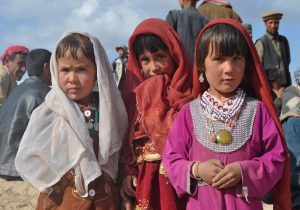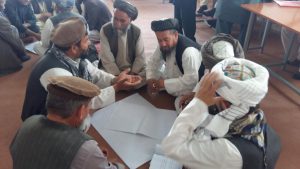
In Argo, in the mountainous area of Badakshan, there is a district school where 2600 students are enrolled. One day when the government monitors came to inspect the school there were only 12 students present.
This case was presented when the Governance section of the Norwegian Afghanistan Committee (NAC) conducted a training in Dialogue and Conflict transformation for members of the school shuras (councils) and elders in the community. The story revealed that teachers and parents had totally different views on why so many of the students were missing.
In September 2016, 10 days after the Eid- ul- Adha (Religious Day) holiday, the investigators from the provincial department of education came to monitor the school. They arrived at 11 AM in the district center, where the famous and big school is located. The first task of the investigators was to meet with the school teachers, and while all the teachers were present there were only 12 students at school this day.Normally 2500 students attend school on official school days, so this was shaking news for the investigators. They started accusing teachers of not caring about the students’ absence, and the teachers blamed the school Shura and parents for the kids being absent for 10 days. There was clearly a misunderstanding between the teachers and the school Shura on why so many kids were out of school.
This case was presented when the Governance section of the NAC was running a 2 day training workshop in Dialogue and Conflict Transformation in the Argo district centre. The training was held for 25 traditional leaders and elders, plus the school Shura. As part of the training they did conflict mapping where participants were invited to share conflicts they had experienced. The district education director was present in the training, and he suggested his group mapped the current conflict in the school about students’ absence after public holidays.

Issues resolved in public meeting.
After the mapping and group presentation the school Shura requested NAC staff to add one more day to resolve this issue, with no lunch cost from NAC included. For trainings lunch is normally provided, and asking for another day without lunch was a sign of sincere motivation to resolve the serious issue on school absence.
Based on the conflict map the groups were invited, including parents with their kids, teachers, school Shura, traditional leaders and district education department staff. When everyone was gathered the teachers said; “we are present at school but the school Shura and parents are not sending the kids to school, and instead they are using the kids for harvesting to earn profit”. But the school Shura and parents say; “no, we were sending our kids to school but they are coming back early”. The students say, “there are no teachers available at school and there are no tasks to do, that is why we don’t go to school. It is very boring for us.”
Finally after a long meeting where all expressed their ideas, and through careful listening, they got a deep understanding of each other’s positions, needs and interest. They then all came up with this agreement:
The parents committed to sending their kids to school every day. The school Shura promised to visit the school daily as well as attending and conducting the school Shura meetings regularly. The teachers ensured that they would pay close attention to students attendance, and agreed to keep the attendance requirement at 75 %, making sure that the students who have more absence must repeat the semester. The district department of education promised to have regular checks on teacher attendance. In this way all parties involved assured each other of commitments for the school to serve its purpose, which was education for the benefit of the community.

The seeds of a new peaceful generation
All parties proved willing to participate and discuss their conflict in the dialogue meeting, and they came up with a concrete solution. This can be a good example for sustainable solutions for the future, because all parties committed to ongoing and continued meetings to support the school. The district education department scheduled ongoing school monitoring and follow up, demonstrating that all parties deeply understood the cause of the issue.
A district education officer called Saifurahman Munir played the role of facilitator in this conflict. He comes from an influential, powerful, traditional and respected family, which made him trusted in the community and well suited to lead the dialogue. The parents, school Shura, teachers and traditional leaders not only found a good solution to the conflict, but they demonstrated to the kids how social conflicts can be solved, and they will continue to practice dialogue among themselves. Together they cultivated the seeds of new peaceful generation in their community.
From opposite positions to common interest and needs
During the gathering they were able to solve the conflict, and the participants highly appreciated the opportunity that was given them. They also requested NAC to conduct this kind of workshops for the law courts. Most social conflicts are not going to be solved at community level, but are referred to the law courts. The courts are making decisions by force, without considering the parties’ positions, needs and interests. That is why most social conflicts have not been resolved and they only manage the conflict on the surface. When social conflicts are not resolved the conflict parties are more inclined to join opposition groups and “Taliban” to fight against the government law courts, and sometimes they threaten to kill the judge and his partners. To avoid violence of this kind it is important to train people to resolve their conflicts peacefully.
In this case the students learned that their voice was crucial to reach an understanding that led to a sustainable solution. Hopefully this experience will encourage them to search for peaceful solutions when they encounter conflicts in the future.
Provincial Coordinator for Social & Institutional Development
Norwegian Afghanistan Committee (NAC) Badakhshan, Afghanistan